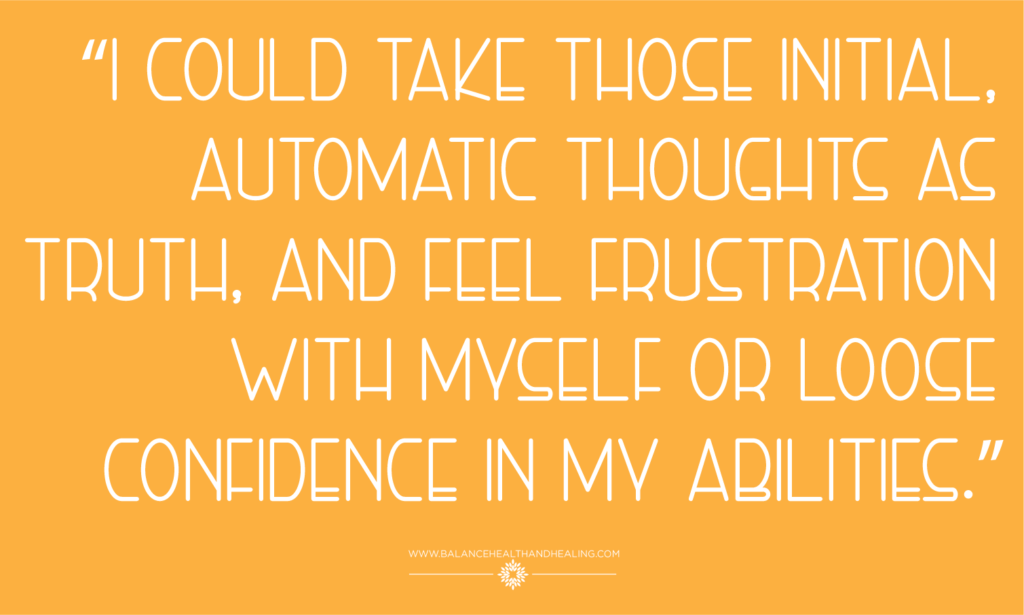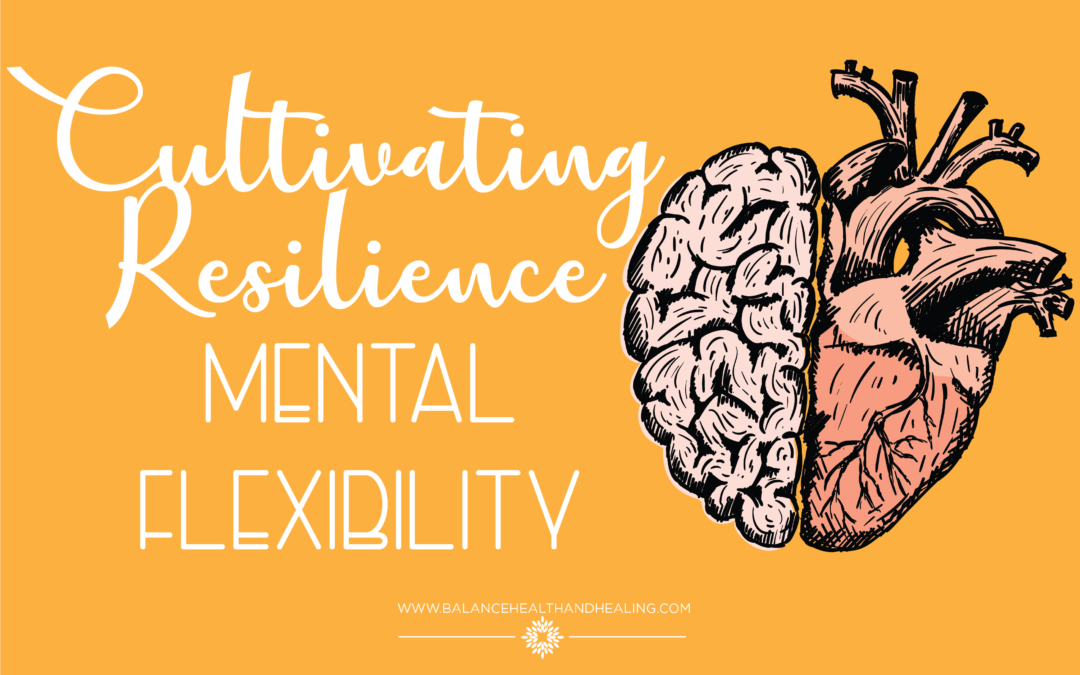This month, I’m continuing our exploration of how we can cultivate resilience in our lives! We’ve been taking a deep dive into specific skills we can master in order to approach difficulty with more resilience, and this month, we will be looking at the 5th of 6 skills- practicing mental flexibility.
When you think about mental flexibility, what comes to mind? I am a very visual learner, and so I tend to think in images. When I hear “mental flexibility”, my mind seems to automatically generate an image of a brain doing yoga. While that’s not exactly what I mean by mental flexibility, I want to use this to illustrate what I am talking about!
It’s easy to look at thoughts that come to mind- in my example, a brain doing yoga- and experience several automatic thoughts firing quickly behind it. “That’s so dumb”; “A serious academic wouldn’t be thinking in cartoons”. I could take those initial, automatic thoughts as truth, and feel frustration with myself or loose confidence in my abilities. Another approach would be to practice some mental flexibility and chuckle, “There I go again, being incredibly visual! Love that about me. Ok. Time to dig a little deeper into the meaning behind those words.”
“A serious academic wouldn’t be thinking in cartoons”. I could take those initial, automatic thoughts as truth, and feel frustration with myself or loose confidence in my abilities. Another approach would be to practice some mental flexibility and chuckle, “There I go again, being incredibly visual! Love that about me. Ok. Time to dig a little deeper into the meaning behind those words.”
Do you feel the difference in those approaches? The way we think can play a significant role in the emotions we experience, and it influences the way we respond when faced with challenges. By identifying rigid thinking that is holding us back and seeking to identify alternative, more flexible ways of thinking, we create a space for ourselves to exercise our creativity to our benefit. We leave the door open for new ways of thinking about something that can lead us to more resilient responses.
The skill of reframing is a key part of practicing mental flexibility. Bad reframing looks something like this: you have the initial thought “this is the worst day of my life!” and then you examine and reframe the thought to “this is the worst day of my life…so far.” That makes quite the impact, doesn’t it?
 When done well, reframing will actually work to balance out some of our automatic thoughts that aren’t serving us well. When faced with a new task, an automatic thought of “I’ve never done this before, I’m going to do it wrong” may come. Reframing that to “I’m good at learning new things and will figure this out before long” provides a little more room for trial and error, growth, and better outcomes. It’s not black and white thinking of “I succeed or I fail”, but instead, it’s focused on the process and recognizes growth is a very possible outcome!
When done well, reframing will actually work to balance out some of our automatic thoughts that aren’t serving us well. When faced with a new task, an automatic thought of “I’ve never done this before, I’m going to do it wrong” may come. Reframing that to “I’m good at learning new things and will figure this out before long” provides a little more room for trial and error, growth, and better outcomes. It’s not black and white thinking of “I succeed or I fail”, but instead, it’s focused on the process and recognizes growth is a very possible outcome!
Everyone needs reminders from time to time of their strengths. Psychologist Edith Grotberg, Ph.D., urges people to cultivate resilience by thinking along three lines:
- I Have: strong relationships, structure, rules at home, role models
- I Am: a person who has hope and faith, cares about others, is proud of myself
- I Can: communicate, solve problems, gauge the temperament of others, seek good relationships.
The next time you find yourself faced with a challenge, take a look at your thoughts and ask yourself- “How could I approach this with more flexibility?” Doing so will slow down some of your automatic thoughts and reactions- and give you time to remember you are facing this new challenge as the incredible, resilient person you have been working hard to become.
References:
Marano, H. (2003, May 01). The Art of Resilience. Retrieved July 16, 2020, from https://www.psychologytoday.com/us/articles/200305/the-art-resilience

